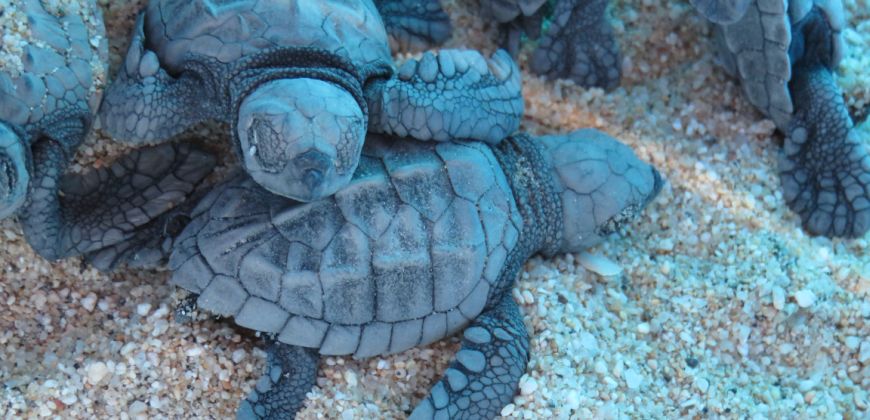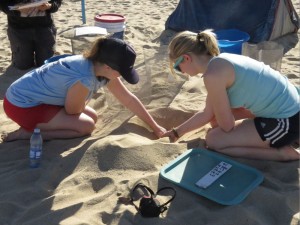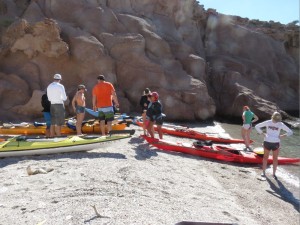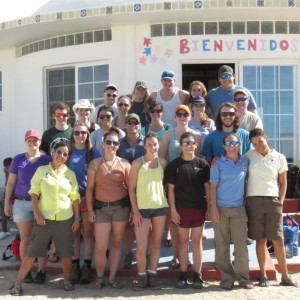
Helping a new generation of sea turtles safely leave the shores of the Baja California Sur was part of a transformative experience for 18 CSU students over winter break. The new wildlife field course in Mexico gave the students the opportunity for hands-on learning about ecology, wildlife and conservation.
‘Trip was amazing’

“The trip was amazing,” said junior wildlife biology major Eveline Goncalves, “when I’m telling people about it I can’t believe it. It feels like a dream.”
The students, who study in the Warner College of Natural Resources and the College of Natural Sciences, were led by Department of Fish, Wildlife, and Conservation Biology faculty Paul Doherty and Kate Huyvaert.
The whirlwind tour began with a visit to a local marine turtle research center where students located turtle nests, relocated eggs, saw turtles hatch, and helped usher them to the ocean. From there students spent a day at a local cactus sanctuary and birded at a local estuary. The next stop was Isla Espíritu Santo, in the Sea of Cortes, where the group learned to sea kayak, swam with sea lions, snorkeled with whale sharks, and studied the island ecosystem and seabirds. Next the group trekked into the mountains back on the mainland and discussed the local montane ecosystem and sought out more wildlife.
Reef conservation

The trip rounded out with a day at Cabo Pulmo National Marine Park, an area established to conserve North America’s only hard coral reef. The students met with former fishermen who abandoned their traditional fishing lifestyles in favor of jobs in tourism to help save the reef system. They also discussed the wider reef conservation efforts with partners of the conservancy dedicated to its protection.
“The students had the time of their lives and got to take part in learning experiences they could not get anywhere else,” said Huyvaert. “It’s super cool to see the light in a student’s eyes when they see a species they’ve never seen before, or try something they’ve never done before. A lot of them pushed their boundaries on this trip.”
Part of something bigger
The students echoed those sentiments, especially in light of the conservation efforts they witnessed. “I felt like I was a part of something bigger than just little old me,” senior wildlife biology major Betsy Oberlies said.

The course was such a success that plans for a similar semester-long experience are in the works.
These are exactly the kinds of international field experiences CSU hopes to offer more students through the creation of the Colorado State University Todos Santos Center. Kim Kita, Director of Special Projects in University Operations, said, “the vision of the center is one of educational exchange. We want to be able to give students the chance to become global citizens, as a part of their journey to their college degree.”
Educational research hub
When the center is finished in the spring of 2015 it will be an educational and research hub for the area, hosting students from CSU and other universities in the US and Latin America as well as workshops, courses, and events for the regional community.